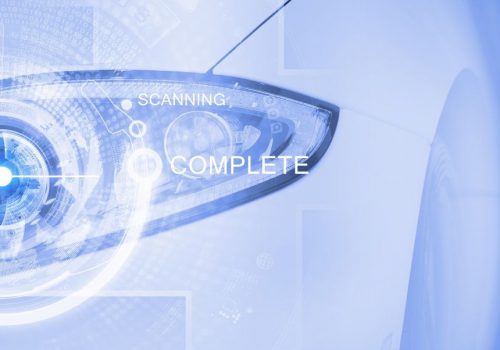As digital transformation accelerates, cloud computing has become a cornerstone of modern business operations. While the cloud offers unparalleled flexibility, scalability, and cost savings, it also introduces new security challenges. Ensuring robust cloud security and navigating the complexities of data sovereignty is crucial for protecting sensitive information and maintaining regulatory compliance.
This article explores the critical aspects of cloud security and data sovereignty, providing insights into emerging threats, best practices, and future trends.
The Importance of Cloud Security
Cloud adoption is at an all-time high, with organizations of all sizes leveraging cloud services to drive innovation and efficiency. According to recent reports, over 90% of enterprises use cloud services in some capacity. The benefits of cloud computing are evident—rapid deployment, scalability, and cost-effectiveness. However, these benefits come with significant security risks.
Data breaches, unauthorized access, and data loss are just a few of the potential threats facing cloud environments. The shared nature of cloud resources means that a single vulnerability can expose multiple organizations to risk. Therefore, understanding and implementing robust cloud security measures is essential.
The Shared Responsibility Model
The shared responsibility model is a key concept in cloud security, defining the division of security responsibilities between the cloud service provider (CSP) and the customer. Understanding this model is essential for organizations to effectively manage and secure their cloud environments.
1. Cloud Service Provider Responsibilities:
- Infrastructure Security: CSPs are responsible for securing the underlying infrastructure, which includes hardware, software, networking, and facilities.
- Compliance: CSPs ensure that their cloud infrastructure complies with relevant regulations and standards.
- Physical Security: CSPs handle the physical security of their data centers, including access control and environmental safeguards.
2. Customer Responsibilities:
- Data Protection: Customers are responsible for securing their data, which includes encryption, access control, and data integrity.
- Identity and Access Management (IAM): Customers must manage user identities, permissions, and access to cloud resources.
- Application Security: Customers are accountable for securing the applications they deploy on the cloud, including configuration and patch management.
- Compliance and Governance: Customers must ensure their use of cloud services complies with industry-specific regulations and internal governance policies.
The shared responsibility model varies slightly depending on the type of cloud service being used:
- Infrastructure as a Service (IaaS): The customer has the most responsibility, including managing the operating system, applications, and data.
- Platform as a Service (PaaS): The CSP manages the underlying infrastructure and platform, while the customer focuses on application and data security.
- Software as a Service (SaaS): The CSP manages the entire infrastructure, platform, and application, with the customer primarily responsible for data and user access.
Understanding and implementing the shared responsibility model effectively can prevent many common security issues and help organizations maximize the security benefits of their cloud environments.

Emerging Threats in Cloud Security
The cloud environment presents unique security challenges. One of the most pressing issues is the rise of misconfiguration incidents. A study by IBM found that 95% of cloud security failures occur due to misconfigurations. These errors can lead to unintended data exposure, making it crucial for organizations to adopt stringent configuration management practices.
Another significant threat is the increasing sophistication of cyber-attacks. Cybercriminals are targeting cloud infrastructure with advanced techniques, such as exploiting vulnerabilities in virtual machines or launching distributed denial-of-service (DDoS) attacks. Additionally, the rise of containerization and microservices has introduced new attack vectors that traditional security measures may not adequately address.
Data Sovereignty Explained
Data sovereignty refers to the concept that data is subject to the laws and governance structures within the nation it is collected or processed. This concept is increasingly important as data privacy regulations become more stringent, representing one of the challenges cybersecurity professionals need to address more frequently due to increased regulations in many countries. The General Data Protection Regulation (GDPR) in the European Union and the California Consumer Privacy Act (CCPA) in the United States are prime examples of laws that impose strict requirements on data handling and storage.
In the context of cloud computing, data sovereignty presents significant challenges. Cloud providers often operate data centers in multiple jurisdictions, making it difficult to ensure compliance with local data laws. Organizations must navigate a complex web of regulations to avoid legal repercussions and protect their data.
Cloud Security Best Practices
To secure cloud environments effectively, organizations must adopt a comprehensive approach that includes the following best practices:
- Encryption: Encrypt data, both in transit and at rest, to protect it from unauthorized access.
- Access Control: Implement strong identity and access management (IAM) practices to ensure that only authorized users can access sensitive data.
- Continuous Monitoring: Use advanced monitoring tools to detect and respond to security incidents in real time.
- Regular Audits: Conduct regular security audits to identify and remediate vulnerabilities.
- Shared Responsibility: Understand the shared responsibility model, where both the cloud provider and the user have roles to play in securing the cloud environment.
Bring Your Own Key (BYOK)
Bring Your Own Key (BYOK) is a cloud security model that allows organizations to use their own encryption keys to secure their data in the cloud. In this model, the organization generates and manages its own encryption keys, rather than relying on the cloud service provider’s key management system. This provides several benefits:
- Enhanced Control: Organizations retain full control over their encryption keys, ensuring they have ultimate authority over who can access their data.
- Increased Security: By managing their own keys, organizations can implement more stringent security measures and reduce the risk of key compromise.
- Regulatory Compliance: BYOK helps organizations comply with data sovereignty regulations by ensuring that keys are managed according to local laws and policies.
- However, BYOK also comes with challenges, such as the need for robust key management practices and the potential for increased complexity in integrating with cloud services.
Hold Your Own Key (HYOK)
Hold Your Own Key (HYOK) takes the concept of BYOK a step further. In the HYOK model, organizations not only generate and manage their own encryption keys but also store them outside the cloud provider’s infrastructure. This means that even if the cloud provider’s environment is compromised, the encryption keys remain secure and under the organization’s control.
- Ultimate Control: HYOK provides the highest level of control over encryption keys, as they are never exposed to the cloud provider.
- Enhanced Data Protection: By keeping keys entirely separate from the cloud environment, organizations can better protect their data against unauthorized access and breaches.
- Compliance Assurance: HYOK is particularly beneficial for organizations with strict regulatory requirements, as it ensures that encryption keys are managed and stored in compliance with local data sovereignty laws.
While HYOK offers superior security and control, it also increases the complexity of key management and may require significant resources to implement effectively.

Technological Solutions for Cloud Security
Advanced technologies are playing a crucial role in enhancing cloud security. Artificial intelligence (AI) and machine learning (ML) are being used to detect anomalies and predict potential security threats. These technologies can analyze vast amounts of data to identify patterns that may indicate a security breach, enabling faster and more accurate responses.
Additionally, Zero Trust Architecture (ZTA) is gaining traction as a robust security framework. ZTA operates on the principle of “never trust, always verify,” ensuring that every access request is authenticated and authorized, regardless of its origin.
Case Studies
Real-life examples provide valuable insights into effective cloud security practices. One notable case is Capital One’s data breach in 2019, where a misconfigured web application firewall led to the exposure of sensitive data. This incident underscored the importance of proper configuration and continuous monitoring.
On the positive side, Netflix’s implementation of a Zero-Trust model has been highly successful. By adopting a Zero-Trust approach, Netflix has significantly enhanced its security posture, demonstrating the effectiveness of this model in protecting cloud environments.
Future of Cloud Security and Data Sovereignty
As cloud computing continues to evolve, so will the threats and challenges associated with it. Future trends in cloud security are likely to include greater reliance on AI and ML for threat detection and response, as well as increased emphasis on automation to reduce human error.
Data sovereignty will also remain a critical concern. Organizations will need to stay abreast of changing regulations and ensure that their data practices comply with local laws. This may involve more sophisticated data governance frameworks and closer collaboration with cloud providers to ensure compliance. Cloud security and data sovereignty are integral to the success of any organization leveraging cloud technologies. By understanding emerging threats, implementing best practices, and staying informed about technological advancements, organizations can protect their sensitive data and maintain regulatory compliance. As the digital landscape continues to evolve, proactive cloud security measures and a commitment to data sovereignty will be essential for safeguarding the future of business.









